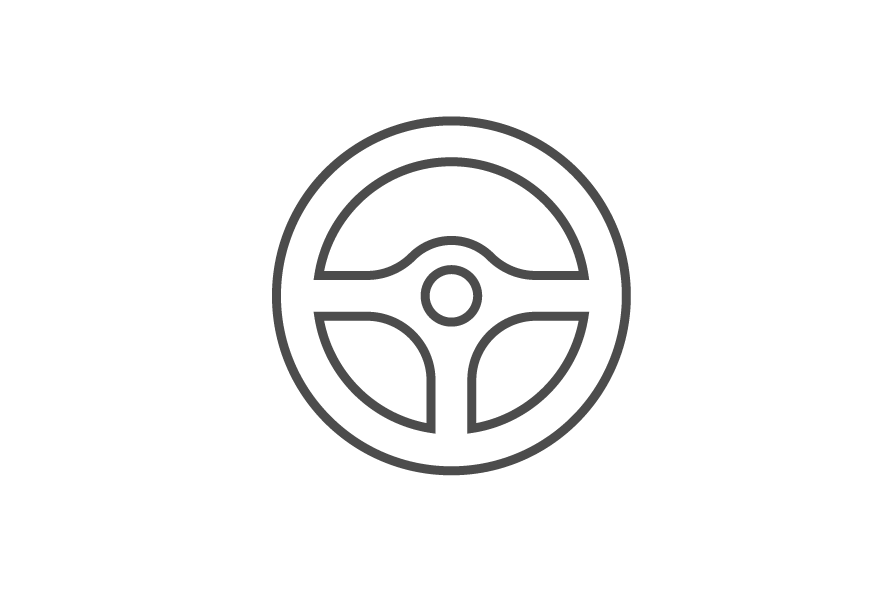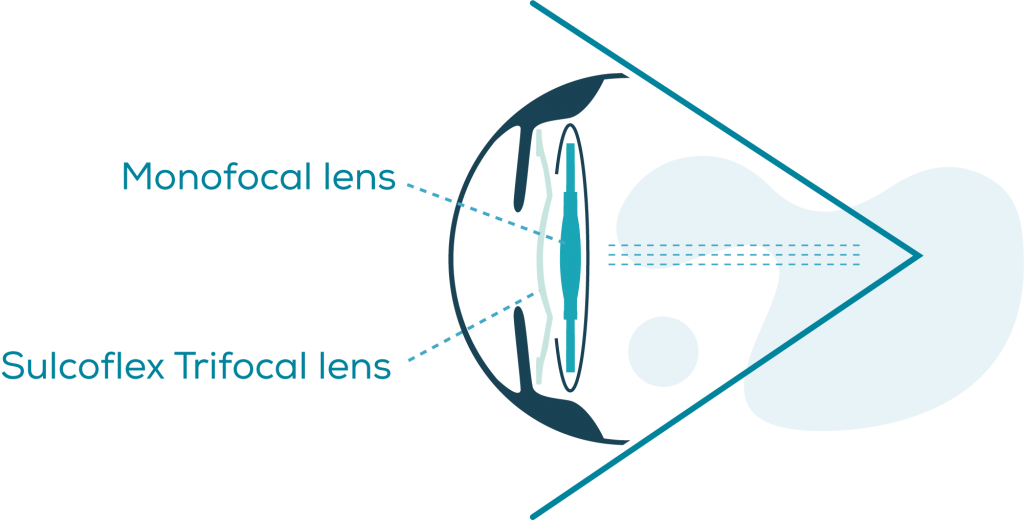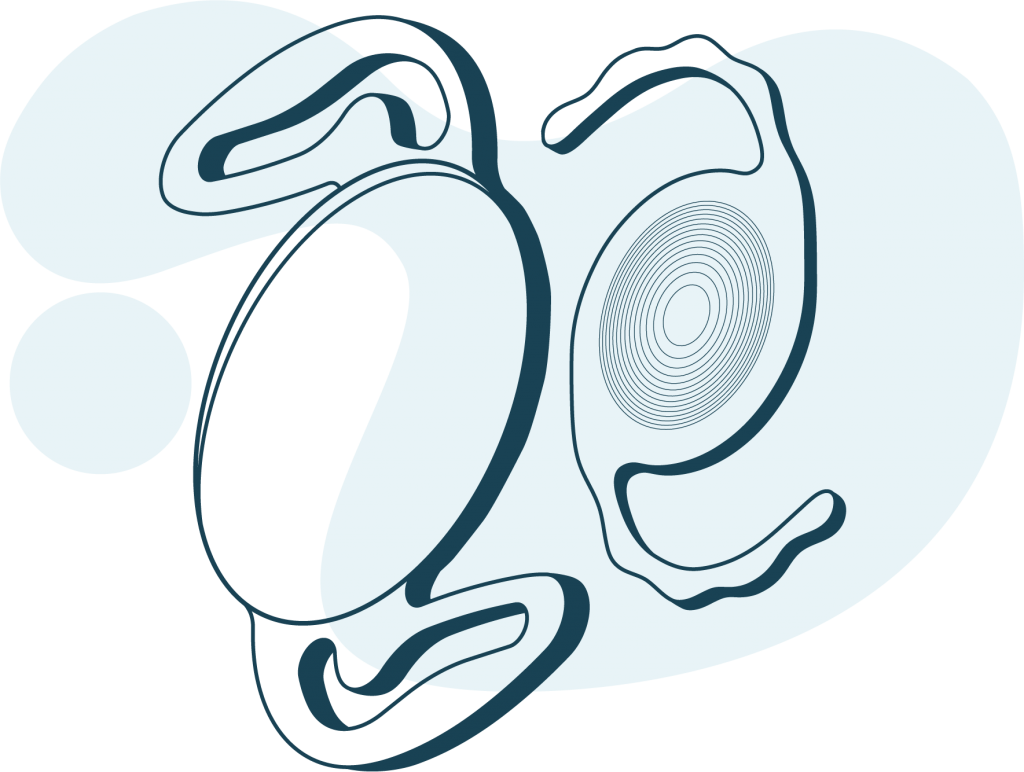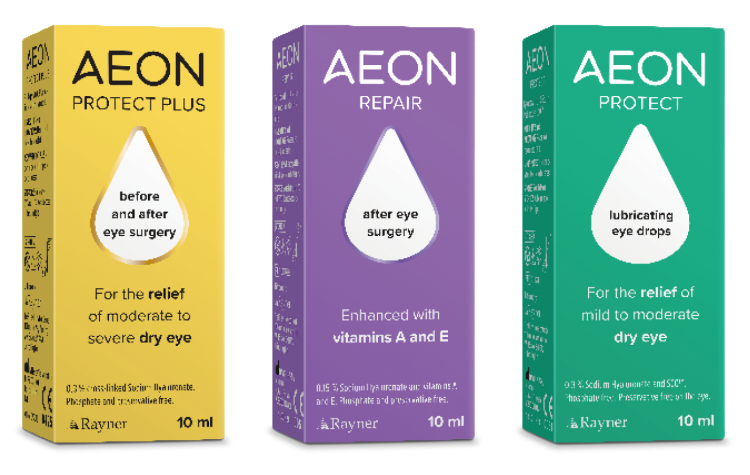Sulcoflex Trifocal Vision Simulator
Use our vision simulator to experience life with Sulcoflex Trifocal.
1. Select a scene
2. See life with a monofocal IOL, reading glasses or Sulcoflex Trifocal
*Results may vary


Whether it’s because of constantly putting them on and taking them off throughout the day, or accidentally leaving them behind when you need them, using reading glasses can be annoying.
Even simple ‘transition’ situations such as watching TV and then reading a message on your mobile phone, teeing off on the golf course and then watching the ball fly down the fairway, or reading a menu and then looking up to say your choice can be slowed down by the use of glasses.
Sulcoflex Trifocal is one of the most advanced intraocular lenses (IOLs) available today, giving you the opportunity to increase your independence from wearing glasses for the majority of everyday activities, at any distance.

reading, writing, using your mobile phone

using your computer, swinging a golf club, or doing anything at arm’s length

driving, cycling, watching TV
Our eye contains a natural lens that focuses light as it enters our eye. This natural lens flexes its shape depending on whether the light is coming from something close or far away, so that it usually appears sharp and with clarity.
When the cataract inside the natural lens is removed, our ability to naturally focus light is lost and so a small artificial lens (called an intraocular lens, or IOL) is put in its place.
Because the intraocular lens can’t flex its shape, it can only focus light coming from one distance – usually ‘far distance’. For light coming from near distance and intermediate distances, we rely on glasses to focus the light and give these objects clarity.

Designed in partnership with a leading European technology institute, the optical technology in Sulcoflex Trifocal is the most advanced in Rayner’s history.
Sulcoflex Trifocal is a small supplementary IOL that is implanted in front of your existing monofocal IOL. It is made of Rayner’s clinically-proven Rayacryl hydrophilic acrylic material for superb optical clarity. Rayacryl is also biocompatible with eye tissue, which helps to avoid inflammation and irritation.


Sulcoflex Trifocal features a patented optic that can focus light from any distance. The innovative design splits the light as it enters your eye, giving you separate points of focus for near, intermediate and distance vision. Think of it like having 3 IOLs in one lens.
Sulcoflex Trifocal’s innovative design encourages stable positioning in the eye, for reliable and dependable outcomes. Fewer rings on the optic surface than many trifocal IOLs results in reduced potential visual disturbances and improved night vision.
Use our vision simulator to experience life with Sulcoflex Trifocal.
1. Select a scene
2. See life with a monofocal IOL, reading glasses or Sulcoflex Trifocal
*Results may vary


Our eyes are forever changing, and not everyone is able to adapt to trifocal vision. Unlike other procedures which are permanent with no option of adjustability, Sulcoflex Trifocal can be removed, replaced or even upgraded at any time – providing you with flexibility and peace of mind.
The procedure is performed by an eye surgeon and usually only takes a few minutes. Your eye surgeon may perform the procedure on both eyes in the same session or may arrange a separate visit for your second eye.
If you’ve not had cataract surgery yet but have it planned, you may consider the Sulcoflex DUET procedure.

After Sulcoflex Trifocal surgery, your brain will have to get used to the way your new trifocal IOL processes light. All trifocal IOLs split light at different points across their surface to give you multiple points of focus at any one time. You may need a little more time to adjust, reinterpret and resolve these images so you see one clear image. This process of adjustment is called ‘neuroadaptation’ and varies from person to person, but usually you will have adjusted within a few weeks.
If you struggle with the neuroadaptation then you may choose to discuss removing Sulcoflex Trifocal with your eye surgeon, reverting back to your previous vision and the use of glasses for near and intermediate activities.

Sulcoflex Trifocal may not be suitable if you have co-existing eye conditions or do a lot of night driving.
If you’re still not sure about your suitability, speak to a Sulcoflex Trifocal accredited eye surgeon.

Side effects and complications with Sulcoflex Trifocal are rare. Some of the adverse reactions that have been associated with the implantation of trifocal intraocular lenses like Sulcoflex Trifocal are:
• Decrease in contrast sensitivity – the ability to distinguish between light, dark and colours
• Halos when driving at night – a halo shaped light appearing around headlights and traffic lights, which usually decrease with time (neuroadaptation)
Unlike other procedures, Sulcoflex Trifocal is reversible and can be removed by your eye surgeon if you do experience any side effects or are unable to adapt to them.
As with all surgical procedures, the outcomes for a trifocal intraocular lens cannot be guaranteed. It is important to be aware of possible effects on vision after surgery. Please discuss possible risks and side effects with your eye surgeon. Not all patients are suitable for this type of intraocular lens. Your eye surgeon at the time of consultation will indicate whether this type of lens is suitable for you.
If you have had cataract surgery and suffer from dry eyes then discover our new family of AEON eye drops, designed specifically for use before and after surgery.
